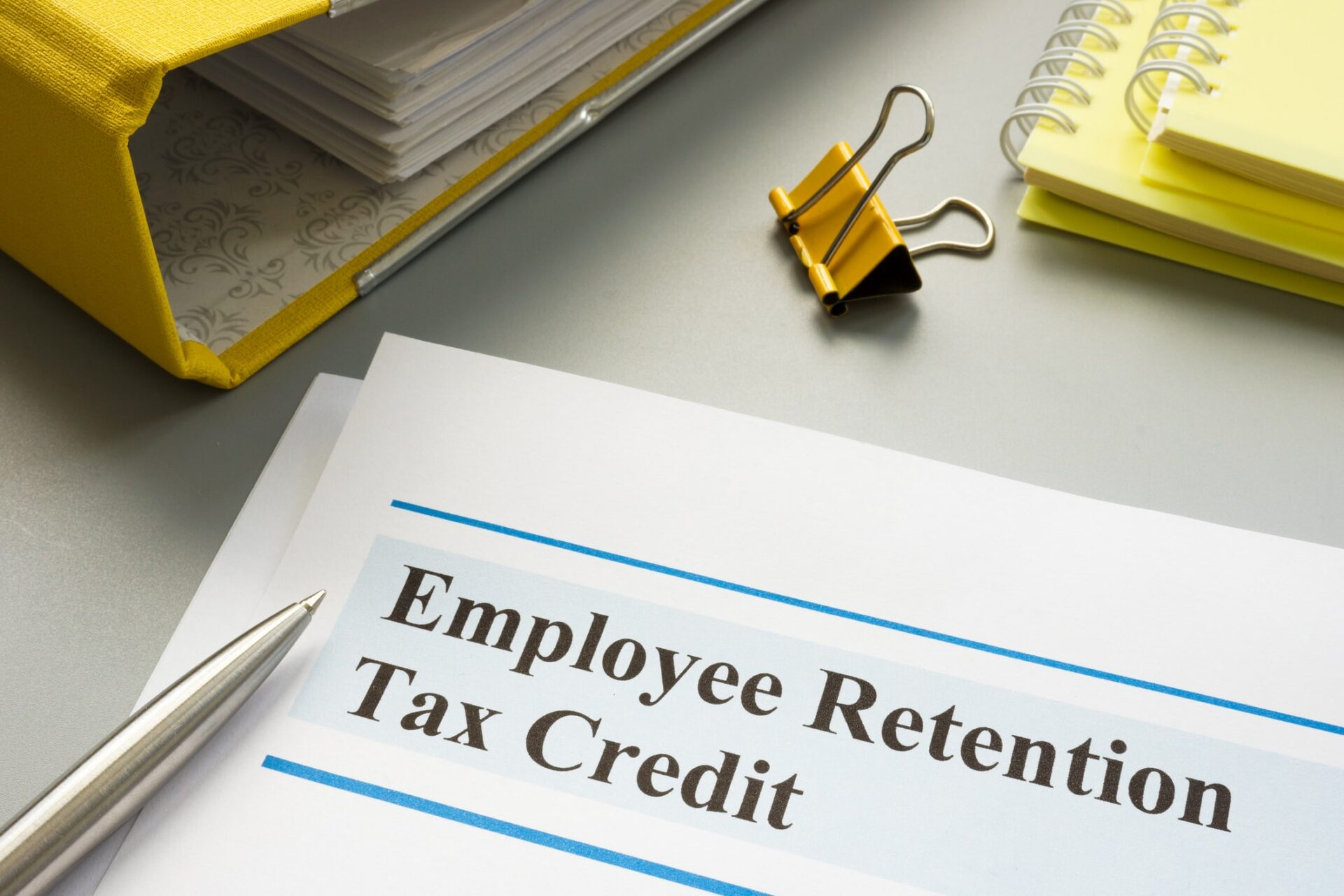
“Get paid back for keeping employees,” says the Department of Treasury flyer, showcasing the tax benefits organizations can reap for keeping their employees hired during the pandemic.
Amidst the flurry of job uncertainty and loss during 2021, select businesses were able to keep their employees working.
To reward and compensate these businesses, the Biden-Harris administration created the Employee Retention Tax Credit (ERTC), a tax incentive for employers who kept their employees working throughout 2021. To get the full inside scoop, we’ve got you covered. Read on for all the resources you need to take the next steps to receive your ERTC (or ERC).
What Is the Employee Retention Tax Credit?
The ERTC is a refundable tax credit (a tax refund) for qualified businesses that kept employees, even during the COVID-19 pandemic shutdown. As workers were getting laid off and desperately trying to seek remote ways of seeking income, many businesses adapted to the changes, keeping their employees — albeit remotely — so things could continue running.
Why the ERTC Passed?
American unemployment in April of 2020 reached its peak at 14.7% (compared to The Great Recession in 2009’s unemployment rate of 10%); there were 4.2 million fewer jobs in October 2021 than there were in February 2020.
While some businesses were able to rise to the occasion by creating a work-from-home environment, others weren’t. The U.S. Bureau of Labor Statistics showed us that during the pandemic, 31% of employers increased remote working opportunities, while 52% didn’t.
To have a thriving economy, people need to work. That’s why Americans were given stimulus checks — to support businesses and literally stimulate the economy.
Those employers who were able to keep people employed — as well as new businesses that popped up during the pandemic — helped the economy throughout the recession. And now, the ERTC wants to reward those businesses as well as cover the cost of keeping their employees so they can minimize the potential for layoffs if their numbers are still readjusting.
How It Works
First, let’s go over what a tax credit is. Debit means money owed on an account, and credit means money added to an account. When you have a tax credit, it means that the government owes you back the money, which will likely be brought back to you during tax refund season (as long as you don’t have debts or outstanding issues on your taxes).
The ERTC is a tax incentive that rewards employers who kept their workers employed during that difficult timeframe when many businesses were struggling.
The Benefits
More money back means more likelihood of a business being able to keep its doors open and employees working. The ERTC helps deliver more cash flow to businesses as soon as their next quarterly filing so they can keep running.
Plus, for those small and medium-sized businesses who might need funds even quicker, filing the 941 tax form gives them the option to receive a portion of the credit paid in advance.
- Lower tax liability — Employers who qualify for the ERTC can reduce their federal income tax deposits, making their taxes owed for things like Social Security and Medicare lower.
- Greater employee retention — Employers can allocate this tax credit towards lifting employee salaries, showing their dedication to their employees and making their employees happier to work.
- Technology investments to better your company — Employers could also allocate this tax credit to implementing new technology or software into the company, making work easier and more streamlined.
Who Qualifies for the Employee Retention Credit?
You’re likely an eligible employer if:
- Your business-as-usual procedures were completely or partially stopped due to government regulations.
- Your gross receipts in one quarter dropped more than 20% compared to either that same quarter in 2019 or the quarter immediately before it in 2020 or 2021.
- You qualified as a recovery startup business (a business that started during the pandemic) in the third or fourth quarter of 2021 and have at least one W-2 employee.
- You have fewer than 500 employees.
If you think you’re qualified, the tax credit is 50% of the first $10,000 in wages per employee in 2020 and 70% in employee wages per employee in 2021.
Note: if you’ve utilized Paycheck Protection Program loan forgiveness, you can’t claim for the ERTC in any tax period.
How to Claim the Employee Retention Credit?
If you’re confident that you do qualify, fill out the most current revision and find the most recent revision, which at the time of this writing is Form 941-X Adjusted.
ERTC Retroactive Termination Guidance
The ERTC was initially scheduled to expire on Jan. 1, 2022, but with the enactment of the Infrastructure Investment and Jobs Act, the credit’s expiry date was moved to cover wages paid by an earlier date of Oct. 1, 2021.
As an employer, if you already received advanced payments for the fourth quarter of 2021, you’ll need to pay back that money to avoid penalties.
Tax Credits or Not, Managing Your Business Finances Takes a Team ????
Small Business Formation
Maybe you’ve been dreaming of being a business owner and reaping tax benefits while you’re at it. It takes a village to build up your business, and with the right village members, it can be simpler than you thought. doola’s small business formation packages give you everything you need to start, run and grow your business, starting with the hardest part: getting started.
You can form an LLC, C Corp, S Corp or DAO, whether or not you live in the U.S., starting with your own account.
Tax Package
Maybe you’re not qualified for the ERTC, but chances are you’re qualified for something. Our yearly tax package includes IRS filing, a 1:1 CPA consultation and live customer support. So tax season doesn’t have to be difficult, even for the most seemingly complicated books.
Bookkeeping
Our year-round financial maintenance categorizes your expenses, reconciles your bank accounts and packages each month’s financial reports, all overseen by an expert.
Total Compliance
Ensure all the facets of your business are running smoothly and legally. Equip yourself with all of the above so can think about your favorite parts of your business and not stress over what you forgot.
FAQs
Is the Employee Retention Tax Credit still available?
Yes, if you paid employees between March 2020 – December 31st 2021, you can apply for the ERTC until April 15, 2024. Read our guide to see if you qualify and how to apply.
How long does it take to get the Employee Retention Credit?
While the Department of Treasury claims that employers can receive their ERTC as soon as their next quarterly filing, some seem to be waiting 6 months to a year for theirs. There’s always the option to receive a portion of it paid in advance by filing the 941 tax form.
What wages qualify when calculating the retention credit?
The ERTC is based on 50% of total qualified wages and qualified health benefits.
Are tipped wages included in qualified wages?
Any wages over $20 a month are deemed qualified wages.










